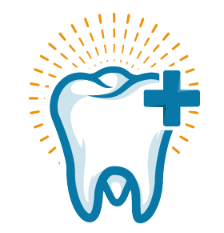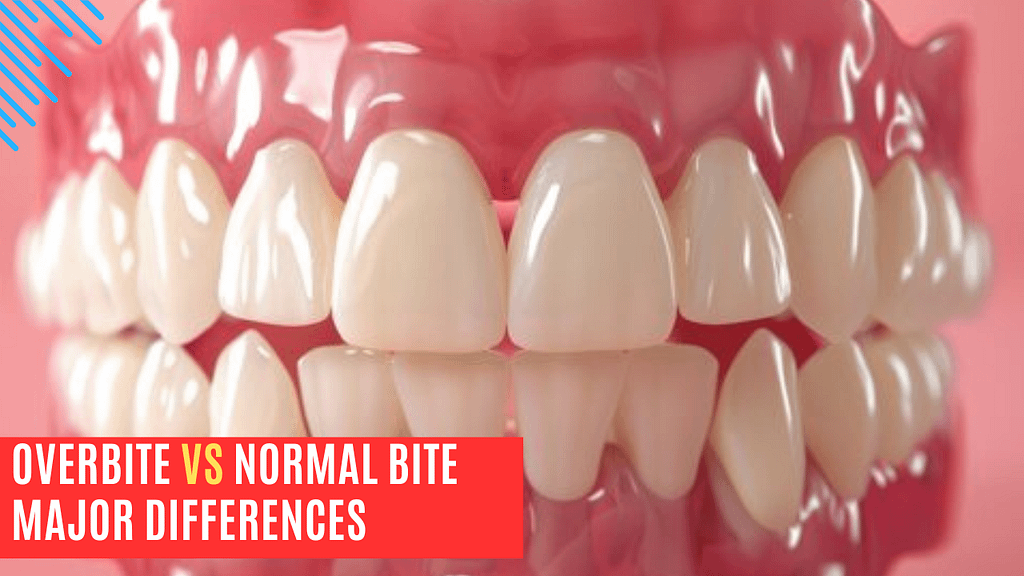Do you wonder how your teeth alignment impacts your smile? An overbite vs. normal bite affects your smile and creates bite-size issues. What do you think is overbite normal? Normal biting or having straight teeth contributes to the aesthetic appeal of your smile. An overbite is unpleasant and can lead to potential oral health issues. Let’s explore how to know if you have an overbite.
Oral Directions offer guidance regarding average vs overbite, how to fix an overbite, and how to overbite a smile. Explore our blog to find overbite types, causes, signs and symptoms, overbite percentage, dental concerns, and remedies for common issues and concerns.
Read: Does Pacifier Cause Gap in Teeth?
What is a Normal Overbite?
Overbite results from improper alignment of the lower and upper jaws. Overbite occurs when the regular upper front teeth disproportionately overlap your lower front teeth. It is also known as underbite, crossbite, or lousy breath(malocclusion).
How Overbite is Different from Normal Bite?
When your mouth is closed, the points of your upper molars should fit into the grooves of your lower molars, and your top teeth should slightly overlap the lower ones. Proper chewing, speaking, and efficient oral functioning are all ensured by this alignment.
Regular bites, also referred to as occlusion, are considered to be the ideal teeth alignment. On the other hand, overbite also refers to buck teeth, which occurs due to misalignment issues. An overbite causes oral complications such as speech development issues, gum diseases, cavities, etc.

Classification of Mouth Bites
There are two main types of malocclusion. These are as follows:
- Horizontal Overbite: The top teeth protrude noticeably over the lower teeth.
- Vertical Overbite: There is a noticeable vertical overlap between the upper and lower molars.
Other types include:
- Crossbite: When one or more teeth in any area of the mouth are misaligned, the upper teeth fit inside the lower teeth.
- Open bite: Teeth are angled outward when the mouth is closed, known as an open bite.
- Underbite: You have an underbite when your lower teeth protrude more than your upper teeth.
- Overjet: When upper teeth are projected outside and cover the bottom teeth, it is called overjet.

What are the Potential Causes of an Overbite?
Overbitea heredity is a concern due to the genetic traits of alignment, teeth shape, and jaw positioning. However, there are some circumstances which cause an overbite, such as:
- Genetics
- Bruxism
- Excessive nail biting.
- Thumb-sucking
- Prolonged bottle feeding
- Pacifier use (past three years age)
- Tongue-thrusting (when the tongue extends excessively forward)
- Cysts/tumours in the mouth or jaw
- Pacifier use
- Teeth grinding
- Nail biting
No matter what the problem is behind a bite issue, an early diagnosis can help treat it with viable options and resolve speaking and eating issues.
Is Overbite Normal?
If you have a slight overbite less than 2 -4 millimetres, it’s normal, and there is no need to worry. However, if overbite exceeds this limit, it may pose serious health issues and disturb a smile.
Another way to determine the degree of overbite is to look at your teeth’ alignment when you smile.
You have severe overbite if there is a greater than 50% overlap between your upper and lower teeth.
For instance, it can cause these problems if left untreated:
- Tooth erosion,
- Tooth decay.
- Jaw pain
- Difficulty chewing.
- Neck pain
- Severe Gum diseases
Orthodontic treatment is required to treat bad bites, and in more severe cases, oral surgery would be the last option for overbite vs normal side profile cases.
Signs and Symptoms of Deep Bite Teeth
Usually, a slight overbite doesn’t result in any serious issues. In contrast, excessive overbite is quite problematic. Symptoms of malocclusion include:
- Breathing issues
- Jaw pain
- Tooth erosion (excessive wear and tear)
- Pain while chewing
- Gum diseases
- Speech challenges
- Cavities
- Temporomandibular disorders (TMD).
8 Key Differences Between Overbite and Normal Bite
Are you interested in understanding what an overbite looks like? Here, we share the main differences between overbite and normal bite:
- Alignment
- Normal Bite: The lower teeth are slightly before the upper ones.
- Overbite: The upper teeth jut out over the lower ones to a large extent.
- Efficiency:
- Normal: Efficient chewing and no speech issues in a normal bite.
- Over: Overbite or deep bite causes problems related to eating, chewing, and speaking.
- Appearance
- Regular: Normal bite overlaps the lower and upper teeth lightly.
- Over: A significant overlap between the upper and lower teeth affects facial aesthetic appearance.
- Oral Health:
- Standard: The foods and snacks are more accessible to chew. Teeth cleaning is much easier, thus minimizing the occurrence of dental caries and periodontal diseases.
- Over: Crowded and crooked teeth will be difficult to clean, thus leading to increased accumulation of food particles and plaque, causing cavities and gum inflammation.
- Tooth Decay:
- Regular: Maintaining oral hygiene is more accessible, as it reduces the chances of tooth decay and gum disease.
- Over: Misaligned teeth create areas a toothbrush cannot reach, increasing cavities and periodontal infections.
- Jaw and Muscle Strain
- For instance, people with usual bites usually experience minimal tension in their jaw muscles.
- On the other hand, overbites result in increased stress on these muscles, leading to pain or even headaches.
- Wear And Tear
- Normal: Even distribution of biting forces, reducing uneven wear on teeth.
- Over: Uneven distribution of biting forces, causing excessive wear on certain teeth.
- Speech
- Standard: In most cases, it will not affect speech.
- Over: Can affect pronunciation and speech to a greater extent.
How to Diagnose Mild vs Normal Bite?
An overbite can be diagnosed during a dental check-up by a dentist. Sometimes, they use imaging technology, such as a dental X-ray, for more accurate diagnosis. Orthodontists will examine your bite pattern and help you determine whether you have an overbite or a normal bite.
5 Best Methods to Fix Overbite
Different treatment options are available for deep bite, but the severity depends on it. Some common dentistry approaches include braces, orthodontic procedures, invisible aligners, etc. Here are the potential treatment options for a deep bite and underbite. Consult with a dentist before choosing any of them.
1: Orthodontics
The American Association of Orthodontics recommends that kids aged seven get their first dental checkup and a thorough assessment by this age. The best way to prevent bite-size issues from an early age is to look for orthodontic treatment. These treatment options include braces, retainers, space maintainers, and Invisalign.
2: Braces
Traditional braces are excellent for resolving mild overbite and deep bite teeth. Braces are available in different colours and materials, from metals to gold. They help shift the teeth with the aid of bands and brackets.
Using braces of any kind will help resolve your bite-size and add to the overall aesthetics. Some patients can only use braces to fix an overbite, but others may also need other treatment options.
3: Invisalign
Invisalign is an advanced method in dentistry that straightens binky and crooked teeth. The transparent retainers help fix unnecessary gaps and shift teeth to their original position, enhancing your smile.
4: Surgery
The last resort to treat overbite, underbite, deep bite and other types is dental surgery. Multi-step dental surgery performed by oral surgeons followed by corrective jaw surgery can fix all dental issues.
5: Tooth extraction
Sometimes, the teeth are extracted to give the remaining teeth enough room. Mostly this practice is common in adults who want to achieve a bright and straight smile. In addition, palate expanders and retainers are used after treatment to prevent further teeth movements.
Read: Are Teeth Bones?
Bottom Line:
An overbite, characterized by a significant overlap of the upper teeth over the lower teeth, can lead to various functional and health issues.
Early diagnosis and appropriate treatment are essential to manage or correct an overbite and maintain optimal oral health.
FAQs
How to prevent overbite?
To prevent an overbite, encourage good oral habits from an early age, such as avoiding thumb-sucking and prolonged use of pacifiers. Early orthodontic examinations and routine dental checkups can also help detect and treat possible problems before they worsen.
Do I have an overbite or normal?
You should consult a dentist or an orthodontist to determine whether you have an overbite.
Is an overbite considered attractive?
A slight overbite is considered normal and attractive, but extreme overbite may impact oral health and look unattractive. A severe overbite causes a smile, dental hygiene, and speech development issues.
What is the normal range for an overbite?
You shouldn’t be concerned if you have a tiny overbite less than two to four millimetres. This is quite natural. However, if overbite exceeds this limit, it may severely affect the smile, teeth jaw alignment and other health issues.

